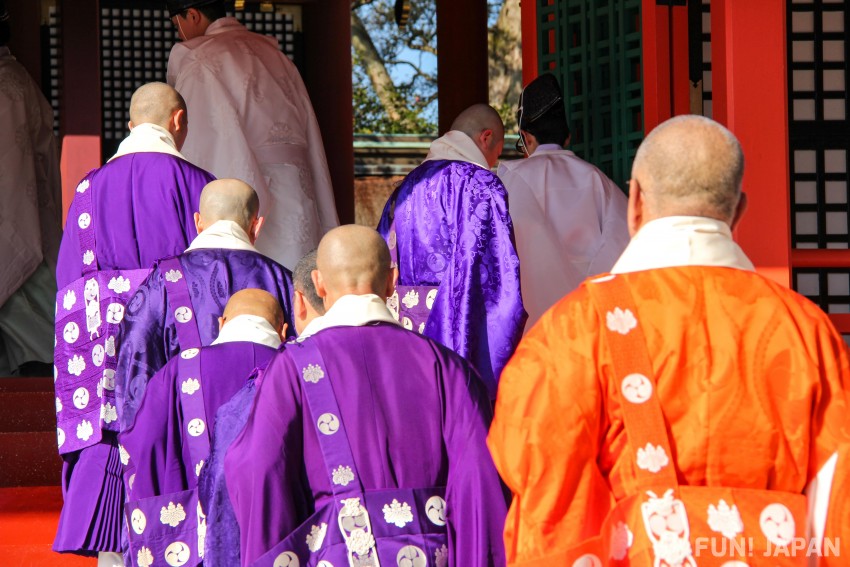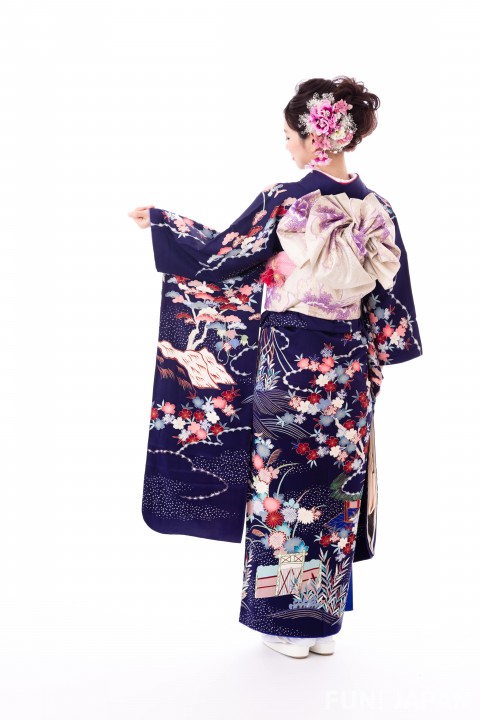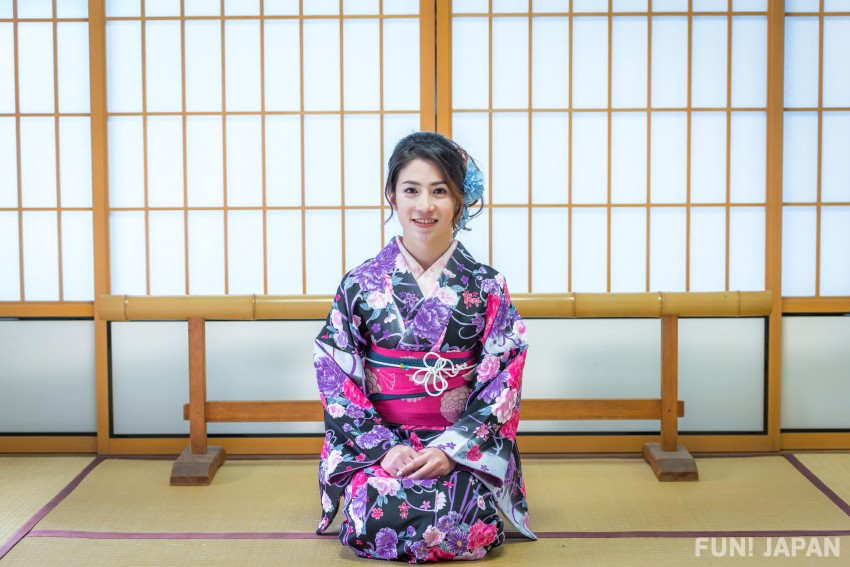
Purple has been a noble colour since ancient times, and purple kimono dyed in that colour also had a special meaning. Even when the times have changed, purple kimono has been popular and has always been a special existence in Japan.
Purple Kimono's Meanings

In Japan, purple used for kimono has two main meanings.
Colour of the Nobility
Such an image is very strong because of the colors worn by high-class aristocrats and high-class monks. Why was it only worn by high-class people? The reason was the rarity of plants that are used to extract this colour.
In the past, the root of a plant called "Murasaki" (ムラサキ) was used to make purple dye (紫 murasaki). It was used only by high-class people because the dyeing itself is time-consuming. There is also a theory that by the aforementioned reason, the image of purple = noble became established.
Colour of the Experience Through Longevity
Currently, the colour is also used for the 70th birthday, Koki celebration (古希祝い), and the 77th birthday, Kiju celebration (喜寿祝い). It is said to mean respect for those blessed with longevity.
Purple Kimono's History

Not just in Japan, purple has a long history in the world.
The Beginning of Purple as a Noble Colour
It goes back to the story of year 603. Prince Shotoku (聖徳太子), who was the regent of Empress Suiko (推古天皇), introduced Japan's first crown system called the Twelve Level Cap and Rank System (冠位十二階 Kan-i Juni-kai). The ranks of officials and aristocrats serving the court were divided into twelve classes. Then, by making the colours of the crowns worn by each one different in the palace, the ranks can be easily understood. Its highest-ranking kimono was purple.
This is said to be largely influenced by China. And it is said that China made purple the highest rank due to the influence of Greece and Rome.
Noble Purple Transition

During the Nara and Heian eras, purple became the colour of the emperor and senior officials of the imperial court. And as a "forbidden color", it could not be used by other people, including the general public. Even in the Edo era, purple, which was called Hon-murasaki (本紫), was the colour of the royal family, so the masses could not wear kimonos using Hon-murasaki.
Today, the general public can wear it, but the image of noble colour has not changed.
Colour Types of Purple Kimono

Although purple is purple, there are various purple colours in traditional Japanese colours.
- Supreme colour (至極色 Shigoku-iro): Deep red-purple that is very close to black. Purple has been the best color since ancient times, and deep purple is exceptional among such purples. Aside from the Emperor and Crown Prince, only the most official of the subjects, Gokkan (極官 top brass), was permitted to wear this colour, and from that point on it came to be called the Shigoku colour, which means supreme.
- Genuine Purple (本紫 Hon-murasaki): bright purple. It is purple coloured by the technique called Shikonzome (紫根染 gromwell's root dye), which is dyed with the roots of the purple gromwell (紫 murasaki) of the gromwell family.
- Imitate Purple (似紫 Ni-murasaki): Reddish purple with dull blue. It was called "Imitate Purple" because it is a colour that resembles purple but not exactly purple in contrast to Genuine Purple. In the early Edo period, Genuine Purple was forbidden, so the populace created a similar colour.
- Blue-Purple (青紫 Ao-murasaki): A vivid purple with a bluish tint. Generally, it represents an intermediate tone between "blue" and "purple".
- Mulberry colour (桑の実色 Kuwanomi-iro): A dark reddish purple color like ripe mulberry. It is a colour dyed using Kuwa plant's fruits, and in the English name it is called mulberry.
- Wisteria Purple (藤紫 Fuji-murasaki): A bright bluish purple like a wisteria flower.
- Violet colour (菫色 Sumire-iro): A colour name derived from the colour of the violet flower (菫の花 sumire no hana), a slightly bluish purple.

Comments